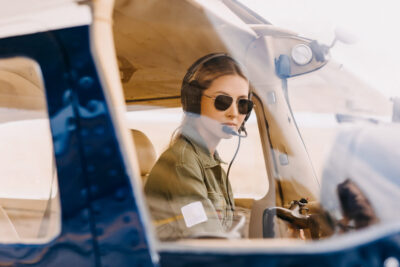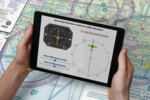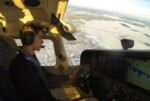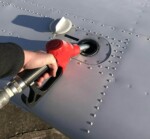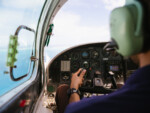Can You Become a Pilot if You Wear Glasses?
16 February 2023 | Updated on February 05, 2024
Many aspiring pilots who wear glasses often ask me if it is possible to fulfill their lifelong dream of becoming a pilot despite having less than optimal eyesight. About 2.2 billion people worldwide suffer from some form of vision impairment which can result in the victim wearing contact lenses or prescription glasses. However, wearing glasses may prevent you from performing specific jobs.
Can wearing eyeglasses limit your chances of becoming a pilot? Let’s find out below!
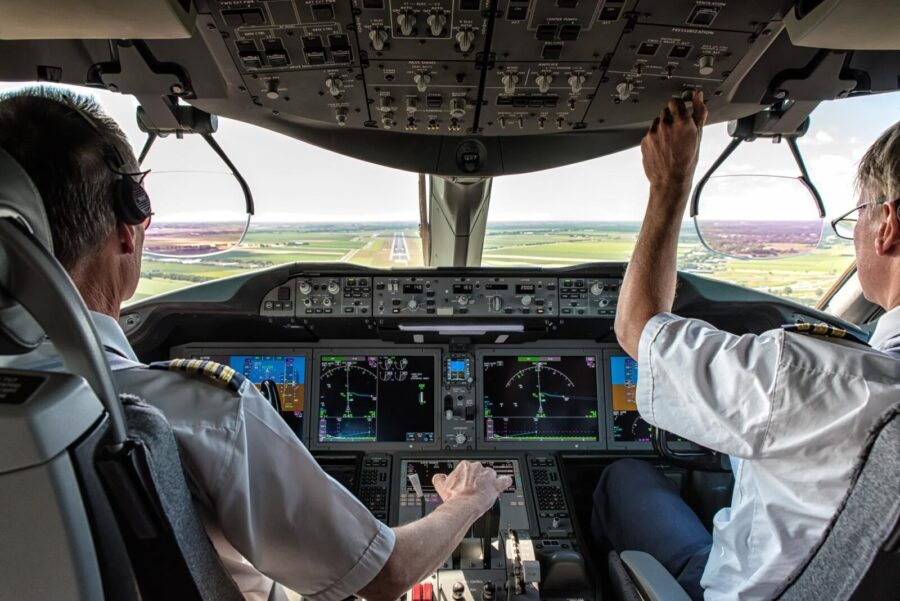

Source: Atosan/Shutterstock
Important Disclaimer: The information and data provided here are for informational purposes only, and are subject to change over time. We strive to provide the most current and relevant information, but the dynamic nature of the topics discussed may result in changes that are not immediately reflected in our content. We recommend our readers to conduct their own research and consult with professionals when making significant decisions based on the data or information provided here. Your reliance on the information in this post is solely at your own risk.
This article is based on information provided by the FAA, in the United States. If you are flying in Europe or elsewhere, make sure to check with your governing aviation regulator.
Can I become a pilot if I wear eyeglasses?
Wearing eyeglasses does not prevent you from fulfilling your lifelong dream of flying airplanes. However, wearing eyeglasses indicates you have some sort of eye problem. Thus your chances of becoming a pilot depend on the nature of your eye defect.
Older pilots may recall a time when flight schools only accept individuals with 20/20 vision. Now the rules are relaxed, but you still need good eyesight to fly – for a good reason. Pilots should be able to read information from cockpit controls and gauges clearly for effective and safe flight operations. Good eyesight is required for depth perception, reading maps, seeing the runway, setting up landing approaches, and identifying objects and other aircraft on the ground and in the air. Pilots need excellent eyesight to see through glare created when flying toward the sun or over exceptionally bright clouds.
The Federal Aviation Authority FAA synopsis of medical standards allows pilots with varying degrees of visual impairments to get a medical certificate qualifying them for a pilot license. This is a big deal because people wearing glasses for far or near vision (or for both) that can be corrected to 20/20 can become pilots. The only catch is a caveat on your pilot license requiring you to wear glasses during flight operations or have a pair of glasses with you in the cockpit.
An aviation medical examiner will issue your medical certificate, and there are different visual requirements for each class of pilot certificate.
| Medical Class | First-Class | Second-Class | Third-Class |
| Pilot Type | Airline Transport Pilot | Commercial pilot | Private Pilot |
| Distant Vision | 20/20 or better in each eye separately, with or without correction. | Same as First-Class | 20/40 or better in each eye separately, with or without correction. |
| Intermediate Vision | 20/40 or better in each eye separately (Snellen equivalent), with or without correction at age 50 or over, as measured at 32 inches. | Same as First-Class | No requirement. |
| Near Vision | 20/40 or better in each eye separately (Snellen equivalent), with or without correction as measured at 16 inches. | ||
| Color Vision | Ability to perceive those colors necessary for safe performance of airman duties. | ||
Can you become a commercial pilot if you wear glasses?
Definitely, as long as you pass the Second-Class medical examination required for a commercial pilot license (CPL).
Visual requirements for a CPL are more complicated because commercial pilots perform night flight operations, which require higher visual perception levels. Commercial pilots need 20/20 vision or better in each eye separately, with or without correction, when they wear glasses. And 20/40 vision or better in each eye at age 50 or over as measured at 32 inches.
Can you become an airline pilot if you wear glasses?
Yes, you can become an airline pilot if you wear glasses. However, you must clear the First-Class medical certificate examinations before obtaining an airline transport license (ATL). Visual requirements for airline pilots are similar to commercial pilots (see table above), and you have a high chance of becoming an airline pilot if you already have a CPL.


Can a military pilot wear glasses?
Can you be a military pilot with glasses? It depends on the vision requirements of your preferred United States military service. Even with glasses, the Air Force requires pilots with eyesight correctable to 20/20. Requirements for Navy pilots are less strict, but they must have at least 20/40 vision.
Air Force
Air Force pilot candidates must have at least 20/70 vision in each eye, correctable with glasses to 20/20. After graduation, Air Force pilots with glasses must have 20/30 nearsighted vision without correction, and your eyesight should be at most 20/400 in each eye (correctable to 20/20). Farsighted vision requirements are 20/70, correctable to 20/20 with glasses or contact lenses.
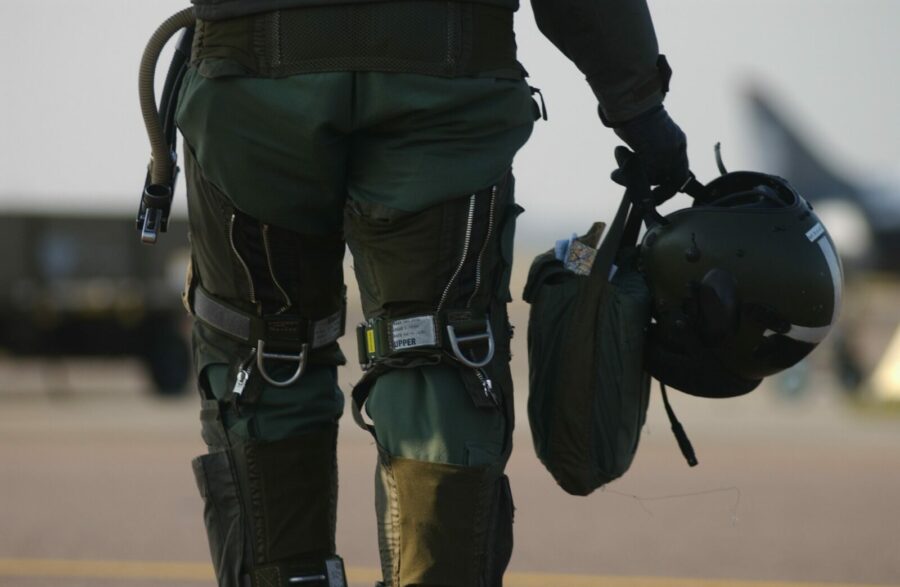

Navy/Marine Corps
You can become a Navy pilot if you wear glasses but must be able to perform flight operations with distant acuity vision correctable to 20/20. The Navy requires pilots with uncorrected 20/100 distant vision or worse to carry a spare pair of glasses in the cockpit. Also, pilots with uncorrected 20/40 near vision or worse must wear corrective glasses or contact lenses. Pilots must have normal color vision, depth perception, and a full field of vision.
Additionally, pilots are allowed to undergo Lasik surgery to correct their vision.
Army
U.S. Army pilots can wear glasses but must have excellent vision attributes like normal depth perception and normal color vision. The Army requires distant visual acuity of at least 20/50 or better in either eye that is correctable to 20/20 and near vision acuity correctable to 20/20. At least 20/400 vision in each eye correctable to 20/20 is required after training to continue flying. Candidates with astigmatism greater than +/-1.00 diopter of the cylinder will not qualify for pilot training. The U.S. Army allows pilots to undergo Lasik surgery to correct their vision.
Coast Guard
Pilots serving in the United States Coast Guard service can wear glasses and must have at least 20/40 vision correctable to 20/20 with glasses or contact lenses. The coast guard requires pilots to have normal color vision without corrective aids, normal depth perception, and a full field of vision. Pilots can also undergo Lasik surgery to correct any vision imperfections.
Can pilots wear contact lenses?
Not everyone loves wearing glasses, plus the trouble of carrying one around and sometimes losing them can make several pilots prefer the convenience of contact lenses instead. But can pilots wear contact lenses during flight duties? The FAA thinks so and has been allowing private and commercial pilots to wear contact lenses for over twenty years.
Currently, around twenty-two thousand civilian pilots routinely wear contact lenses, and many are pilots with First-Class medical certificates (airline pilots). The FAA has strict rules concerning contact lenses and does not allow pilots to wear contact lenses for monovision correction.
Can you become a pilot if you are colorblind?
Individuals with mild color deficiencies may get a chance to become a pilot, provided they can prove their ability to identify colors related to flight and ground operations to a medical examiner. Being colorblind is a big deal in aviation because pilots must recognize different colors to fly an airplane safely. These include aircraft position lights, approach-slope indicators, light-gun signals, airport signals, etc. Colorblind pilots may find it challenging to recognize these colors at night, especially during high-stress situations caused by fatigue or poor visibility.
Several individuals may not be aware that they are colorblind and often find out after a medical examiner performs a color perception test. But does being colorblind prevent you from becoming a pilot? Not likely, you can convince the FAA to conduct further tests proving your color perception. Some pilots who get lucky may receive their pilot certificate but are restricted to day flights.
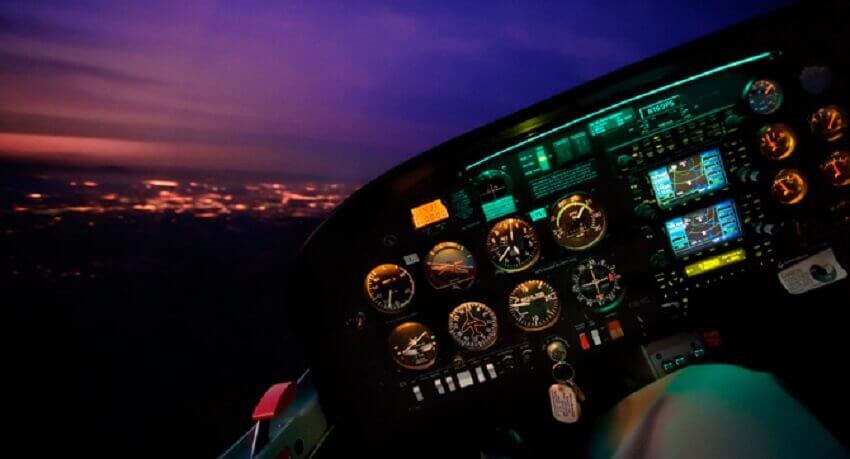

© Interpilotacademy.org
Conclusion
You must understand that wearing glasses does not always indicate bad or weak eyesight. I advise you to complete a medical examination before pursuing your dream of becoming a pilot. It is also important to thoroughly review the FAA vision requirements for pilots. Good luck.








